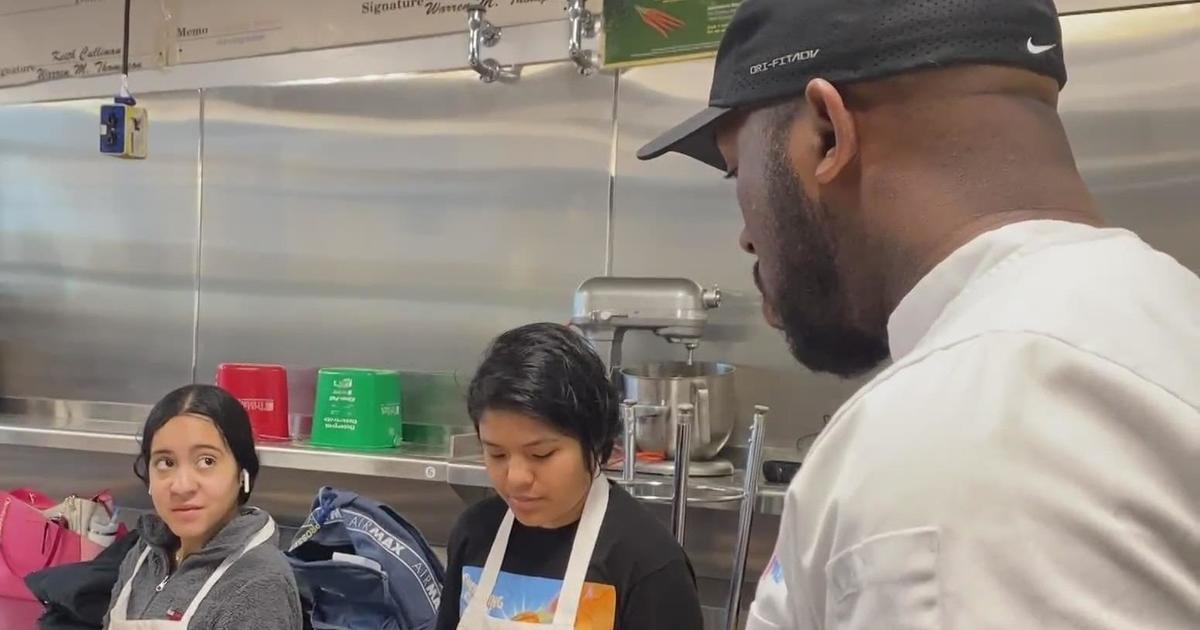Signs Of Hope At The Greater Chicago Food Depository As Demand Lowers, But Food Insecurity Still Higher Than Before Pandemic
CHICAGO (CBS) -- The coronavirus pandemic put a big strain on food pantries across the nation.
CBS 2's Marissa Parra had a look Wednesday at how Chicago is navigating the food crisis one year later, because it takes a lot to keep Chicagoans fed.
It also takes a lot of hands to take on that task.
"I think it's close to 100,000 volunteer hours during the pandemic, and so, I mean, that's just incredible," said Greg Trotter, spokesman for the Greater Chicago Food Depository.
And that is just within that one organization, which has remained in emergency mode since the pandemic began.
During our interview one year ago, Jim Conwell, senior director of marketing and communications for the depository, said, "Food banks have dealt with recessions; we've dealt with natural disasters, but this feels like we're dealing with both at the same time."
The depository in that interview cited rising food costs and fewer donations with sky-high demand as a looming crisis.
"It certainly could have been worse," Trotter said Wednesday. "I'll say that."
Trotter cited a number of factors for how and why the depository was able to meet supply against the odds, including federal assistance and increased donations from people at home – and volunteers who never stopped showing up.
"Many of them have lost their jobs themselves," Trotter said. "They've been on unemployment like many other millions of Americans, but instead of sitting home, they've been coming here to pack food for their neighbors in need."
Because of the rise in the price of food and the need for food banks to buy more of it, the depository's fiscal budget for food purchasing is double this year than it was the year before – $30 million from July 2020 to July 2021.
As far as food supply, it was a record-breaking year.
"There have been months where we're distributing 350,000 or 400,000 pounds a food a day out of this warehouse, compared to like 150,000 or 200,000 a year ago," Trotter said.
While demand is slowing from the peak last summer, it is still higher than average. And although the economy is improving, serving the underserved is a marathon, not a sprint.
"We're still serving significantly more people as compared to before the pandemic," Trotter said. "It was a crisis for many of our neighbors, and continues to be."
The depository said in a fact sheet that the two-pronged crisis of COVID-19 and rising food insecurity has hit communities of color the hardest – with households with children often most affected.
Between September 2020 and February of this year, more than 36 percent of Black households with children, nearly 28 percent of Latino households with children, and almost 17 percent of white households with children experienced food insecurity, according to a Northwestern University analysis.
It is projected that in 2021, 613,360 – or 11.8 percent – of Cook County residents will live in food-insecure households, compared with 418,720 – or 9.3 percent – in 2019 before the pandemic.
Altogether, the depository distributed 30 percent more pounds of food between February 2020 and February 2021 compared with the same time period a year earlier – an increase of 22.3 million additional meals, 580,000 emergency boxes with 25 to 30 pounds of food each, and 680,000 meals for children and youth provided in partnership with community organizations.
Roughly $9 million has also been granted to help lower-income communities slower to recover on Chicago's South and West sides, with four new pantries opening soon.
Click these links to volunteer or donate to the Greater Chicago Food Depository.



